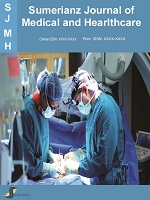Sumerianz Journal of Medical and Healthcare

Online ISSN: 2663-421X
Print ISSN: 2706-8404
Quarterly Published (4 Issues Per Year)
Journal Website: https://www.sumerianz.com/?ic=journal-home&journal=31Archive
Volume 6 Issue 3 (2023)
Screening and Titration of Anti-A and Anti-B Haemolysins in Blood Donors: An Essential Test for Transfusion Immunosafety of Packed Red Blood Cells
Authors : Amah Patricia Victorine Goran-Kouacou ; Kouabla Liliane Siransy ; Adjoumanvoulé Honoré Adou. et. al.
DOI : doi.org/10.47752/sjmh.62.20-27
Abstract:The study aimed to examine the presence of anti-A and anti-B haemolysins in the serum of blood donors. Methods: A retrospective cross-sectional survey was conducted at the National Blood Transfusion Centre (CNTS) in Abidjan-Treichville, involving 1350 voluntary blood donors aged 18 to 65, belonging to blood groups A, B, and O. The immuno-haematology unit of the CNTS laboratory performed all biological analyses. Data collection forms from the CNTS Côte d’Ivoire computer system were used to collect socio-demographic data and haemolysin test results. Haemolysins were detected using a manual technique of direct haemagglutination of serum with A1 and B test red blood cells treated with papain, with titration performed through dilution series. Statistical analysis employed the Chi-square and Fisher tests at a 5% significance level. Results: Male donors constituted 86.3%, with a mean age of 31.8 ± 5.2 years, primarily in the 25-34 age group. The prevalence of haemolysins was 20.2%, with higher frequencies observed in males (73.3%, p=0.005), blood group O ((82.7%, p=0.000), and the 25-44 age group (49.8%, p<0.0001). Anti-B IgG was the most common haemolysin type (49.1%, p=0.0000). Anti-A IgG levels were notably higher in group O compared to group B (p=0.001) and in males compared to females (p=0.012), while anti-B IgG levels were higher in group O compared to group A (p<0.0001). Titration analysis indicated a prevalence of titration 2, with no high titres (≥ 64) detected. Conclusion: The study underscores that blood group O donors exhibited a higher likelihood of haemolysins. Despite generally low haemolysin titres, caution is advised during transfusions involving blood with these irregular antibodies due to their potential to cause severe complications in the recipient.


